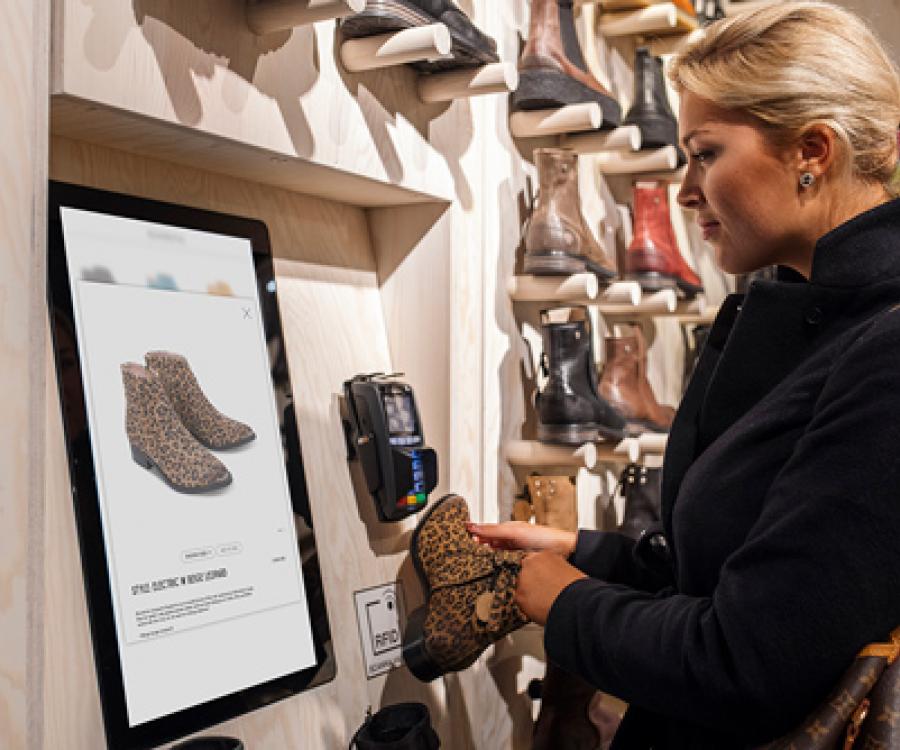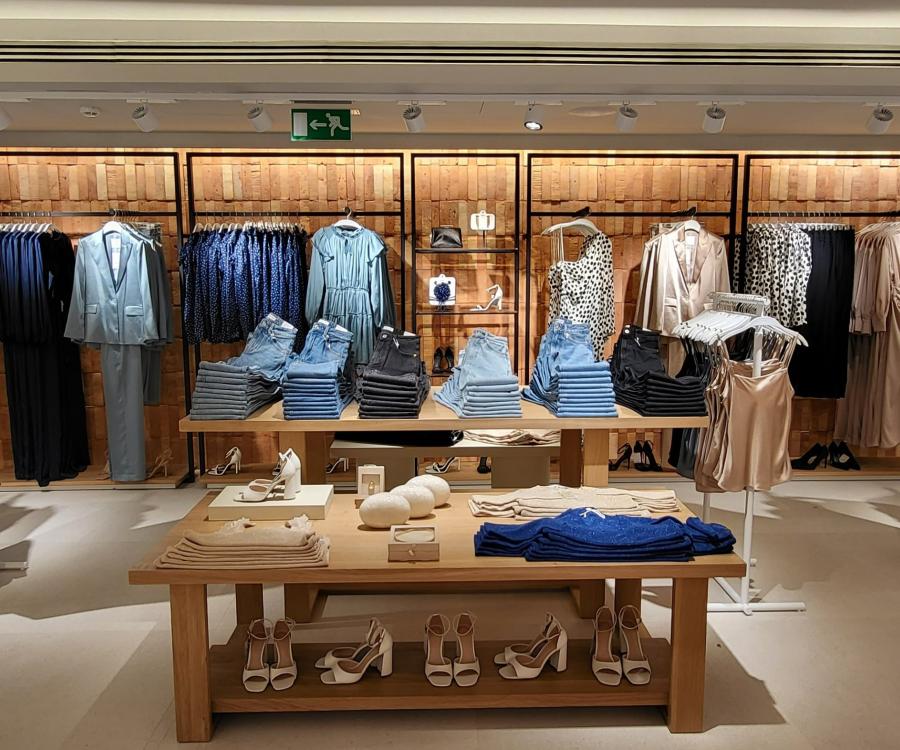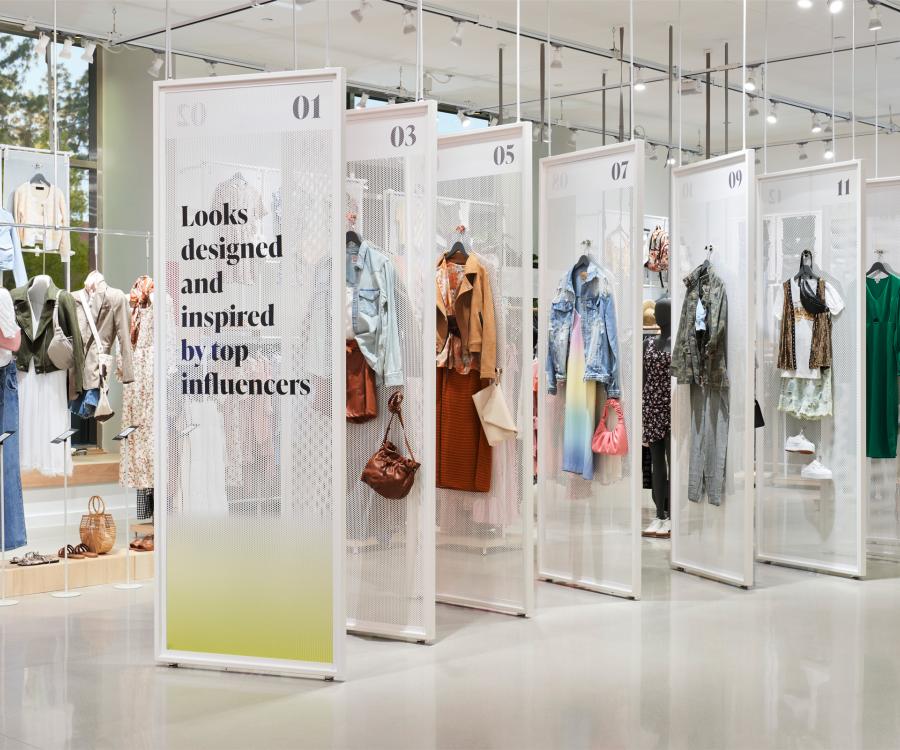Today's customer always has his smartphone in hand. Do not miss anything, always be up to date. In order to keep stationary fashion retail a "place-to-go", retailers should go into much detail and meet the wishes and habits of customers with current technologies.
Mark Sievers, Head of Consumer Markets at KPMG, said: "Making the stationary shopping attractive is a great challenge for retailers at the moment. Particularly important in this context is an efficient networking of the online and offline channels as well as process optimization, because this is the only way brick-and-mortar retail can keep up its long-term prospects in the online age."
What is it that actually makes a customer browsing the shop buy something? "Creating worlds of experience" is the major approach to reanimiate offline retail. This means that if the customer feels comfortable and perceives the shop as a brand and a trendy place to shop through its design, concept, service and attractive POS marketing, he remains faithful to the location.
Also in fashion retail, the trend increasingly goes to shopping online. But up till now, specialized stores still are the dominant distribution channel. This was shown by the study "Fashion Retailers 2025", conducted by IfH Cologne together with KPMG and the Federation of German Textile Retailers. For retailers this means they have to bring together these tendencies and habits of customers.
Prerequisite for this are suitable cross-channel concepts. These are made possible by the growing number of digital solutions for the shop, within which the customers smartphone plays an active role. If, for example, garments are equipped with RFID solutions and QR codes, this opens up entirely new possibilities. Inventories and routes can hereby be understood much better. At Zara, C & A and Gerry Weber for example, garments are already equipped with RFID to control inventories.
But especially for the customer, digital solutions, for example with Augmented Reality elements or touchscreens, open up an exciting way to simplify their shopping trip and actually make it an experience.
Digital solutions and personal service should come together
But be cautious: Just upgrading the shop with digital solutions is not the right way for retailers. Markus Schwitzke, managing partner of Schwitzke Graphics GmbH, emphasizes: "Quite a lot of people are making a lot of money with the digitalization of the shop. But what counts the most when shopping at a store, still is the service factor." According to a study by Oracle from 2015 66 percent of consumers surveyed still whish for personal attention from the staff. But if the salespeople can only offer insufficient information, this will deter the customer permanently.
But those things do not rule each other out, provided that digital and personal service intertwine. This is shown for example by the intelligent or virtual dressing rooms, which are currently being brought to the market from different developers. They should offer the customer the opportunity to further inform themselves about a garment on a touchscreen in the dressing room. Are the trousers available in another size or color? What outfits would complement it? Those can be ordered digitally and then be brought to the dressing room by the staff.

The fear of personnel expenditures
There are minor differences between those new solutions. Some make it possible to identify garments via RFID already upon entering the dressing room then to present them on a touch screen. In others, the customer pulls out his smartphone and uses it to scan the QR code to obtain this information. In some cases, the staff brings the desired garments to the dressing room, sometimes it is provided in a drawer that can be opened by the customer from inside the room.
The possibility of personal delivery services discourages many retailers at first, because more service also means more staff. In test runs, however, it has been shown that a clearly visible increase in sales, especially in peak hours, can justify using these extra staff resources. And there also is the image boost, because the happiest customer is the one, who easily and quickly gets what he wants? It may seem that the delivery variant of the intelligent locker room is more appropriate for a higher-priced fashion segment. And yet precisely this combination of digital information and the personal service could be what helps the stationary fashion retail in general.
Interested parties can get to know digital dressing rooms at EuroCIS 2016 in Dusseldorf – at the booths of Salt Solutions and Phizzard.
Technical steps for a smooth customer journey
Retailers, who want to digitalize their dressing rooms, first of all need a web shop and a digitalized ERP system. The challenge then is to integrate the different softwares, channels and devices at the store.
Depending on the solution this will go in a different way. The connection to the web shop is the easiest option - the implementation here takes about a month. If the inventory management system has to be prepared, the implementation is prolonged. In addition, the personnel has to be trained, which in most cases does not mean any problems due to the fairly intuitive processes.
The latest solutions also offer completing the payment process directly within the locker room. The customer can either pay electronically via touchscreen or in the future even with the own smartphone in the web shop, as he is already used to. According to Statista, last October nearly 70 percent of smartphone owners used their mobile device for online shopping.
And according to current research, in 2019 there will be more than 55 million smart phone users in Germany. The own smartphone therefore is the medium that customers know and which they "trust" in a certain way. So why not take advantage of this to make sales transactions in the real shop, but still online? The customers privacy remains protected because he has to use no strange device.
In addition, the buyer can save himself the way to the checkout counter and, if he wants, even the bag because he can also select home delivery as an option. The risk of losing conversion on the way to the checkout decreases. Because the simpler the payment process is for the customer, the more comfortable he feels and sales for the retailer increase.
Some retailers such as the US companies Bloomingdales and Kohl's are currently testing different versions of the digital locker rooms. Prada uses the glass doors of the cabins as a virtual mirror in order to present garments via RFID in three dimensions and in slow motion. Here, however, cameras and plasma screens are used. In Germany especially shoe stores like Bodycheck or Anika Shoe utilize the intelligent solution of the dressing room. Further test runs are already in the starting blocks.




